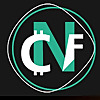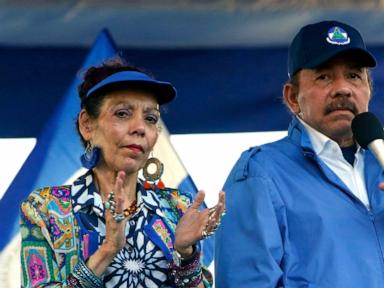ARTICLE AD BOX
Few inventions have packed as much technical brilliance, social energy, and disruptive potential into a single idea as the blockchain-based token.
Token Basics and Origins
From Colored Coins to Today’s Multichain Reality
The earliest token experiments started in 2012 with Bitcoin “colored-coins,” small metadata overlays that tracked assets on the original chain; by 2015 Ethereum’s programmable smart contracts turned the experiment into a global playground, and today virtually every high-performance layer-1 or layer-2 network—Solana, BNB Smart Chain, Polygon, Avalanche, Sui, TON, and many more—supports its own rich token standard suite.
[Insert Image: timeline illustration showing the evolution from colored coins to ERC-20 and beyond]Milestone Standards at a Glance
| 2015 | ERC-20 | Ethereum | First fungible token interface; balances stored in contract mappings |
| 2017 | ERC-721 | Ethereum | NFTs—unique IDs and ownerOf() mapping |
| 2019 | SPL | Solana | Ultra-low-latency fungible tokens using account programs |
| 2021 | ERC-1155 | Ethereum | Multi-asset “semi-fungible” container |
| 2023-25 | ERC-4337 / 6551 | Ethereum | Account abstraction & token-bound accounts for smart-wallet UX |
Technical Foundations of Tokens
Smart Contracts and Ledger Entries
A token lives as an immutable data structure held inside a smart contract: balances are simply key-value pairs in persistent storage, transfer logic is enforced by code, and every state mutation is notarized by the network’s consensus algorithm. On Bitcoin-inspired UTXO chains (e.g., Cardano, Nervos) tokens piggy-back on transaction outputs; on account-based chains (Ethereum, Avalanche C-Chain, etc.) they sit behind contract addresses. Either way, cryptographic proofs replace centralized ledgers, enabling censorship-resistant asset ownership.
Cross-Chain Standards and Wrapping
Because each network speaks its own byte-code dialect, moving tokens cross-chain relies on bridges that mint a wrapped replica on the destination chain while locking the original. More recently, omnichain protocols such as LayerZero, Wormhole, and Cosmos IBC allow native interchain transfers by relaying proofs instead of custodying assets.
[Insert Image: diagram of a token moving through a bridge from Ethereum to Solana]Token Classification by Purpose
Utility Tokens
These tokens power a dApp’s internal economy—paying gas on Polygon (MATIC), exchanging value in Uniswap (UNI), or unlocking features in Chainlink (LINK). Their price discovery mirrors demand for the underlying service.
Governance Tokens
Governance tokens encode voting rights in decentralized organizations such as MakerDAO (MKR) or Aave (AAVE). Holders submit or vote on improvement proposals, treasury allocations, and parameter changes, forging on-chain political systems where token weight equals voice.
Security Tokens
Digitized equity, debt, and revenue-sharing instruments packaged under securities laws are issued on permissioned ledgers like Stellar, Provenance, or private Ethereum forks. Cap tables, dividend distributions, and transfer-restrictions are enforced by code.
Asset-Backed & Stablecoins
Tokens such as USDC, Dai, and real-world-asset vault shares mirror fiat or commodities through off-chain collateral audits or on-chain over-collateralization. Stability mechanisms span algorithmic re-pegs, collateral auctions, and redemption arbitrage.
| Utility | N/A (synthetic scarcity) | Access & payment inside a protocol |
| Governance | N/A | Voting & proposal power |
| Security | Equity, debt, cash flow | Regulated investment vehicle |
| Stablecoin | USD, collateral vaults | Price-stable medium of exchange |
| RWA | Real estate, treasuries, art | Fractional ownership of tangible assets |
Lifecycle of a Token
Genesis: Designing Supply and Economics
Founders decide hard-cap vs inflationary supply, decimal precision (commonly 18 for ERC-20), and distribution curves. A token allocation chart usually splits shares between community, investors, team, and ecosystem funds under time-locked vesting contracts.
Issuance: Minting and Distribution
Mint functions create new supply; they can be permanently disabled to guarantee scarcity. Distribution routes include launchpads, liquidity bootstrap auctions, NFT sales, or direct staking rewards.
Circulation: Transfers and Gas
Each transfer triggers a transfer() function that emits an event for indexers like The Graph. Users pay network fees in native gas tokens; some chains enable fee abstraction so users can pay with the token itself.
Management: Burning, Upgrades, Migration
Burn functions destroy supply by sending tokens to irrecoverable addresses, counteracting inflation or funding buy-back programs. If the contract is upgradeable (e.g., OpenZeppelin proxies) a multisig or DAO can swap logic while preserving balances.
Tokenomics in Practice
Supply Models
| Fixed Cap | Bitcoin (21 M) | Approaches zero after last halving |
| Inflationary | Dogecoin (5 B per year) | Steady nominal issuance |
| Deflationary Burn | BNB (auto-burn) | Supply shrinks each quarter |
| Elastic | AMPL (rebasing) | Supply expands/contracts to target peg |
Incentive Mechanisms
Staking locks tokens to secure proof-of-stake networks or liquidity pools, rewarding participants with emission and fees. Yield farming layers multiple protocols—staking LP tokens in vaults that auto-compound returns—to bootstrap TVL. Lock-up periods align long-term incentives by delaying liquidity.
Treasury Flow and Value Capture
Protocols route swap fees, borrow interest, or validator revenue into treasuries governed by token holders. Funds pay for audits, bug bounties, and public-goods grants, turning tokens into micro-economic policy levers rather than passive assets.
Token Distribution Channels
ICO, IEO, IDO
The 2017 ICO boom birthed public smart-contract sales; centralized exchanges rebranded sales as IEOs with KYC, while IDOs launched on decentralized launchpads like Polkastarter and CoinList, sending tokens directly to self-custodied wallets.
Airdrops and Retroactive Drops
Teams snapshot early users and programmatically drop tokens to spark grassroots ownership. Stand-out examples include Uniswap’s 2020 UNI drop and Blur’s season-based points system.
Liquidity Bootstrapping Pools (LBPs)
Platforms such as Balancer allow projects to seed a pool with asymmetric weights (e.g., 90 % project token / 10 % stablecoin) that decay toward 50 / 50, letting open-market buyers set price discovery without relying on centralized market-makers.
Utility in the Broader Ecosystem
Decentralized Finance (DeFi)
Tokens serve as collateral (MakerDAO, Liquity), governance stakes (Curve, Frax), and liquidity incentives (SushiSwap, PancakeSwap). Composability means one vault receipt can itself become collateral elsewhere, weaving a capital-efficient web of money-legos.
[Insert Image: collage of DeFi protocol logos interconnected]Non-Fungible Tokens (NFTs)
NFT collections like Bored Ape YC or Pudgy Penguins represent provably scarce cultural assets, while NFT-fi primitives fractionalize or lend against them, turning art into decentralized collateral.
Gaming and Metaverse Tokens
Play-to-earn networks (Axie Infinity’s AXS/SLS), fully-on-chain games (Dark Forest, Words 3), and interoperable metaverse economies (The Sandbox SAND) push tokens beyond speculation into real-time, user-generated gaming economies.
[Insert Image: screenshot of an in-game marketplace where items are listed as tokens]Real-World Asset Tokenization
From tokenized U.S. Treasury bills on Ondo or Maple to fractionalized real estate on Roofstock on Chain, off-chain assets are wrapped into smart contracts, widening 24/7 global market access.
Security and Auditing
Common Vulnerabilities
Re-entrancy (DAO hack), overflow/underflow, and unchecked external call patterns remain top threats. Formal-verification tools like Certora Prove and Eth-BMC mathematically exhaust code paths, but human reviews catch design flaws machines miss.
Audit Processes
Blue-chip launches undergo multiple independent audits, public contest peer reviews (Code4rena, Sherlock), and on-chain bug-bounty insurance. Auditor reports detail severity levels and recommended fixes; passing audits is now a de-facto trust prerequisite.
Custody and Wallet Design
Hardware wallets (Ledger, Trezor), multisig schemes (Gnosis Safe), and social-recovery smart accounts guard keys. Wallet front-ends parse transaction data to mitigate phishing and display human-readable actions instead of raw hex.
Interoperability and Cross-Chain Movement
Bridges and Wrapped Assets
Lock-and-mint bridges (WETH, WBTC) dominate volume, but they concentrate risk in custodial smart contracts. Light-client bridges like Near  Ethereum Rainbow or Cosmos IBC treat the source chain as a decryptable proof system, minimizing trust assumptions.
Ethereum Rainbow or Cosmos IBC treat the source chain as a decryptable proof system, minimizing trust assumptions.
Omnichain & Layer 0 Protocols
Protocols such as LayerZero, Axelar, and Wormhole expose generalized messaging layers that decouple where a token lives from where it can move. Developers issue “OF-Tokens” or CCIPs that default to cross-chain composability.
Account Abstraction and Smart Wallets
ERC-4337’s EntryPoint contract lets users pay gas in any token, batch transactions, and assign guardians, paving the way for email-style blockchain UX. Chains like Starknet bake account abstraction at the protocol layer.
[Insert Image: UX mock-up of a smart-wallet approving a pay-gas-in-token transaction]Governance and Community Dynamics
Token-Governed DAOs
DAOs pool treasuries and collectively deploy capital: Lido-DAO stakes ETH, Nouns DAO funds public-goods memes, and Gitcoin grants match donations. Proposals usually require a forum discussion period followed by on-chain voting.
On-Chain vs Off-Chain Voting
Snapshot off-chain signatures offer gas-less polling, while on-chain votes (Compound Governor Bravo, Tally, Aragon) execute results automatically. Quadratic voting, conviction voting, and delegated voting seek balance between whales and minnows.
Delegation and Meta-Governance
Token holders can delegate voting power to specialists; some delegates amass influence across multiple protocols, forming meta-governance funds that steer the broader DeFi landscape.
[Insert Image: graphic illustrating delegate voting power flowing through multiple DAOs].png)
 4 months ago
20
4 months ago
20








 English (US)
English (US)